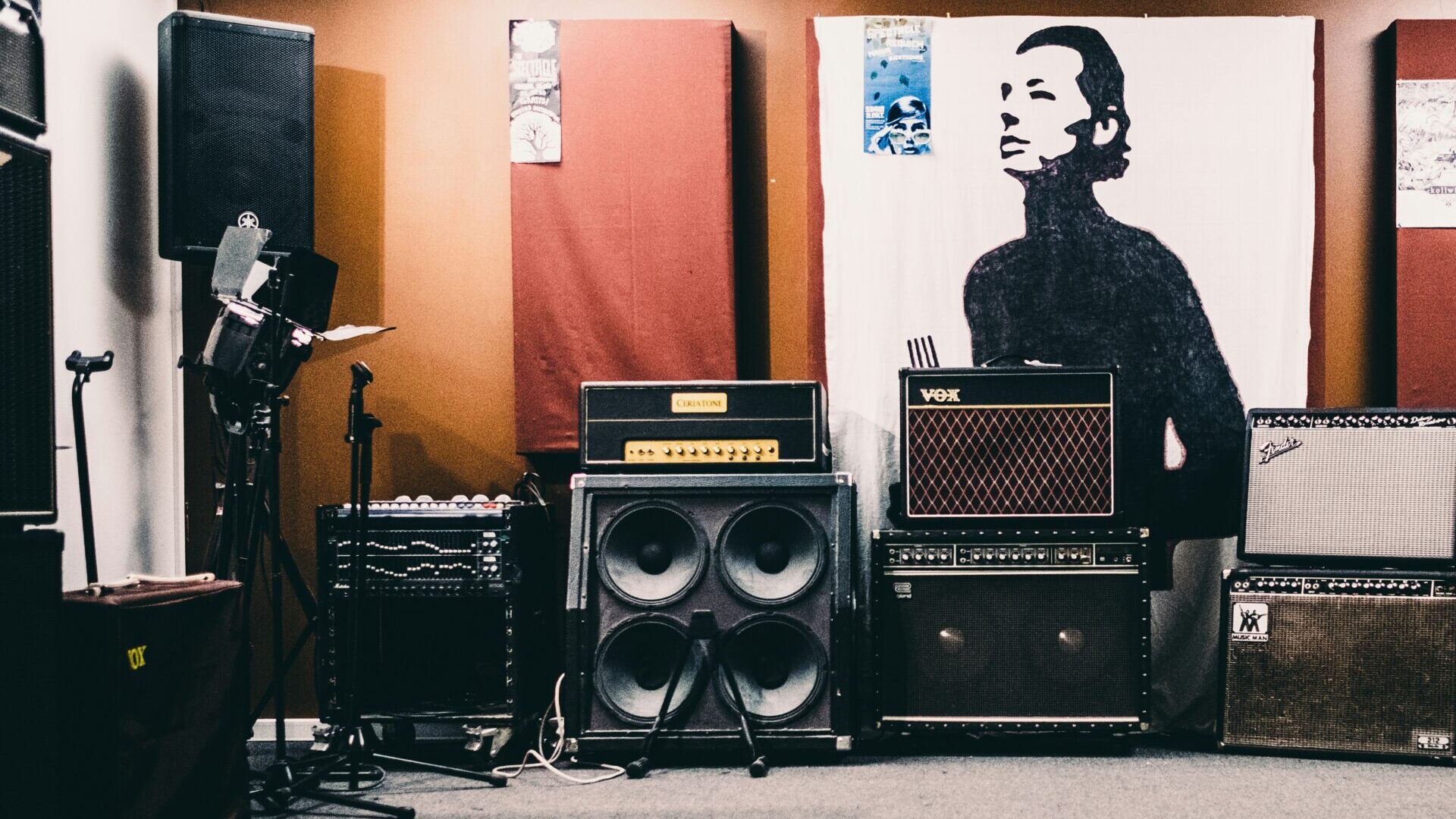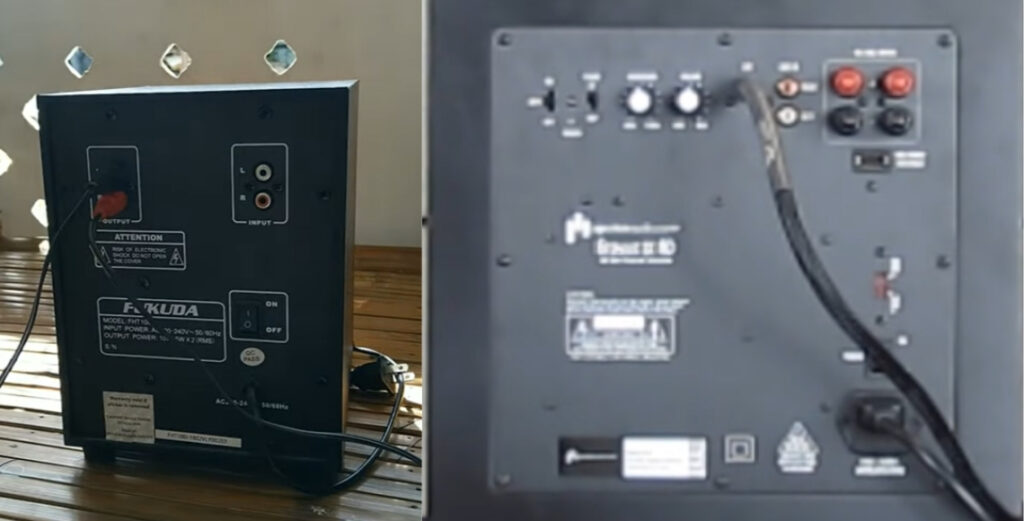When you’re looking to upgrade your sound system, one of the first things you’ll want to do is connect a subwoofer with a speaker wire. But how exactly does this work? Let’s take a closer look at how to connect speakers and subs so that they can deliver powerful bass through any room in your house or office space.
Before we get started, beginners need to know what kind of amplifier they’re using before purchasing speakers – some amps have just one channel while others might have dozens. This will determine whether or not you need additional equipment like bi-amping which requires running audio through separate amplifiers for low frequencies versus high frequencies respectively.
With these basic questions answered, it’s time to get started with the setup process. In this article, we will share how to connect a subwoofer with speaker wire cabling. Here is a step-by-step guide about how to connect a subwoofer with speaker wire.
Steps:
-Cut the speaker wire to the desired length and strip off the insulation from the ends of the wires. Connect one end of the cable to a banana plug (positive) and the other end to another banana plug (negative).
-Connect one side of the crossover or audio signal XLR connector into the input on the subwoofer amplifier. Connect the other side of the cross-over/XLR connector into the output on speakers. If speakers are not connected yet then connect them now by attaching the positive terminal on the left speaker’s wiring cord to the negative terminal on the right speaker’s wiring cord, while also connecting two sides with spade connectors or bare wire crimping technique. Lastly, make sure that all cables aren’t being pinched when placing them back into their original position.
-Make sure that all the connections are made successfully and the amplifier is on, then turn up the volume on the subwoofer to the desired level by using knob/slider control for adjustment.
NOTE: some speakers may have an input labeled “subwoofer.” In this case, you would need only one cable from XLR connector (positive) into input marked “subwoofer” and the other end of XLR connector (negative) into output which should also be marked as such. This will give a stereo sound quality with both left and right speaker outputs being played at the same time through subs instead of just one or the other so make adjustments accordingly before turning it up too loud!
Steps to Connect Subwoofer
-Remove the subwoofer from packaging and place any necessary hardware (e.g.: screws) if needed
-Set it in an upright position away from other electronic devices or objects that may cause interference with the signal
-Make sure the power cord is plugged into a working outlet, then turn on the amplifier by pressing the button located close to the input jack of your amplifier’s line-level inputs which should be labeled as “power”
NOTE: some amplifiers have different names for this button such as ‘on,’ ‘standby’ or ‘sleep.’ Be aware of how your particular model operates before turning off the unit. It can take up to 30 seconds to initialize after being powered back on so don’t worry if you hear crackling sounds at first.
-Connect the speaker wire to the amplifier’s line-level inputs by plugging one end of the cable into the input jack and the other in a matching output port on your subwoofer
NOTE: make sure you use the correct type or size of cable for each connection – it is often noted as “spade connector,” “banana plug” or “polarity.” If not indicated, then refer to the owner’s manual with pictures included for clarification. Make certain cables are securely attached between both ends so they will not come loose during operation
-Turn on the power switch located close to the input jack on the rear panel (labeled as ‘power’) which should turn red when activated
-Check that all connections were made properly before turning on the power
-Turn up the volume of your amplifier to the desired level. This can be done by turning the knob in either direction or pressing buttons for plus (+) and minus (-).
NOTE: you will need to adjust output levels (volume) as well – this may take some experimentation depending on how much amplification is needed, what type of speakers are being connected, their sensitivity rating, and other factors
-Plug speaker wire (often color-coded black with red tip) into corresponding terminals labeled ‘+’ and ‘-‘ which should correspond to positive/negative polarity markings on the back panel near the input jack. If not indicated then refer to the owner’s manual with pictures included for clarification
-Power switch located close to the input jack on the rear panel should be turned on
-Subwoofer will only work when the power switch is in the ‘on’ position and connected to other speakers.
-Once this has been completed, turning knob or moving volume potentiometer (if present) may increase the sound output of the subwoofer. Turning knob clockwise increases level while counterclockwise decreases it. Moving potentiometers up/down gradually adjusts levels more accurately than control knobs that have a limited range of motion
NOTE: some units do not contain a separate volumetric wheel – instead either two voltage controls are located near the input jack or one pot with dual functions; these can be adjusted by hand without the need for tools. If there is no physical adjustment then adjust the volume after connecting the speaker wire or speaker wire to the subwoofer.
-Subwoofers are not designed for low-frequency reproduction of the common human voice, they will add little if anything in this area
-Sound engineering is a complex and subjective discipline that requires sound knowledge on how it works as well as good ears; books can be read/studied about audio equipment but cannot substitute experience gained by working with live bands or recording studios for prolonged periods. Do not buy cheap products without researching them first because many manufacturers use cheaper wiring materials that produce an inferior result than those made from copper – some may also have fake speakers inside their boxes.
Technique:
Read the product’s manual. Choose an input to connect it with, such as “subwoofer output” or “speaker terminals.” Plug one end of a wire into the corresponding jack (either on the subwoofer or speaker). Connecting from speaker terminal to power amp is not recommended for beginners as there are more than two wires and you might make a mistake when connecting them.
Uncertain how many channels your amplifier has? Some amps have just one channel while others have dozens – read up about what kind of amplifier you’re using before purchasing any speakers that require special connection methods like bi-amping, which means running audio through separate amplifiers for low and high frequencies.
Steps:
– There are a few things you’ll need before we can start wiring speakers and subs together – first, you’ll want an amplifier that has channels for power (check your model number if unclear). This will determine the kind of speaker wire or cable you purchase. Generally speaking, most amplifiers come with jumper cables that attach in between different pairs of wires from one side to another and then plug back into their respective sides at the end for continuity purposes. If they don’t come supplied like this, it’s best to connect both ends individually so there is no chance of shorting out your equipment while trying to set up your system. The next thing you’ll want to do is decide how many speakers you need – if your room has a square footage of 1000, for example, and there’s not much distance between the back wall and one side wall (say about 12 feet), then consider having four-speaker sets with two on each side.
– You will also have to determine whether you would like all of these speakers in the front or evenly dispersed around your living space. If you choose an even distribution approach, be sure that they are spaced far enough apart so that sound doesn’t interfere with other speakers when it bounces off walls. Additionally, make sure the cables are long enough for where you plan on positioning them before buying anything else. Lastly: once everything is wired up correctly, set the speaker levels and make sure that everything sounds good
– Now, you’re ready to put up your speakers! Hook them into their respective amps. If there are any adjustments needed for treble or bass (depending on how powerful your amp is), do this now. Once these have been adjusted properly, turn the volume all of the ways down so it doesn’t hurt anyone’s ears when testing if the sound comes out of each speaker
(this will be done in a moment) . Turn off all power sources and start with one speaker at a time by pushing its “on” button. You should hear something coming from the corresponding side – this means that you’ve successfully wired up an amplifier with wires running to both sides of the most basic type of speaker. After this, test to make sure that it is working correctly by setting the volume at a moderately high level and turning on all power sources.
– Now for how to wire up the subwoofer: If you have an amp with more than two outputs (usually there are four), then your best option would be connecting one set of wires from each side of the speakers into either channel left or right input to split out the sound between channels. This same statement can be applied if you’re using just one amplifier but want stereo subwoofers; simply hook both sets of speaker cables (left + right) together before running them into their respective inputs on your amp(s).
– Otherwise, use a single word to get the attention of your readers.
– If you don’t have an amp with more than two outputs or stereo input, then it’s time to resort to the dreaded “Y” adapter cable. This handy tool has one plug on either end that splits into two; just like how a Y in math functions as both a point and line between A and B. In this case, wire up each side of the speakers together with their respective wires from the left + right channel before running them into any vacant inputs (or channels) for which they are compatible.
How To Connect Subwoofer With Speaker Wire:
After this, test to make sure that it is working correctly by setting the volume at a moderately high level and turning on all power to the speakers and subwoofer.
– Set the input on your amplifier to be compatible with how you wired up the channels (usually by using a knob or toggle switch). If not, then this is usually done through trial and error because of how many different kinds there are.
– Test it out as mentioned before – make sure that everything’s working correctly before leaving for good!
Conclusion:
That’s about all there is to it; just follow these steps above in order from top-down and hopefully soon enough, you’ll have an amazing sounding system at home waiting for you when you get back. All without breaking too much of a sweat! Remember, take your time during each step so that you could follow them precisely.
Welcome to Audio Topper, your trusted source for all Things audio! I’m Lee Buckalew, a passionate audio enthusiast with years of experience exploring and reviewing top-notch audio equipment. My goal is to help you make informed decisions by offering honest reviews, expert insights, and detailed guides. Whether you're upgrading your home sound system or looking for the perfect gear to enhance your experience, I’m here to guide you every step of the way. At Audio Topper, I believe great sound transforms how we experience the world. Join me in uncovering the best in audio technology and elevating your listening experience.


